-
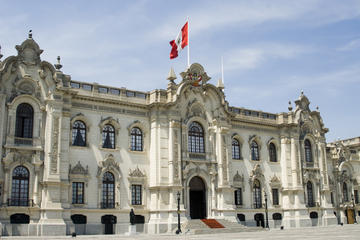 Presidential Palace
Presidential Palace Dominating the northern quarter of Lima’s UNESCO-listed Plaza de Armas, the grand Presidential Palace, or Casa de Pizarro, is one of the city’s most impressive historic buildings. Built in 1535 by Francisco Pizarro to mark the founding of the city, the Presidential Palace has b
Presidential Palace
Presidential Palace Dominating the northern quarter of Lima’s UNESCO-listed Plaza de Armas, the grand Presidential Palace, or Casa de Pizarro, is one of the city’s most impressive historic buildings. Built in 1535 by Francisco Pizarro to mark the founding of the city, the Presidential Palace has b
-
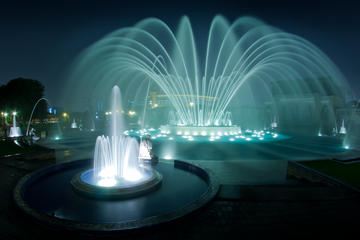 Parque de la Reserva
Parque de la Reserva With 8 hectares of neo-classical gardens and pagodas, dotted with ornamental sculptures, Parque de la Reserva is a welcome pocket of greenery, located on the cusp of downtown Lima. Although the park was laid out in 1929 to commemorate the civilian armies of the War of the Paci
Parque de la Reserva
Parque de la Reserva With 8 hectares of neo-classical gardens and pagodas, dotted with ornamental sculptures, Parque de la Reserva is a welcome pocket of greenery, located on the cusp of downtown Lima. Although the park was laid out in 1929 to commemorate the civilian armies of the War of the Paci
-
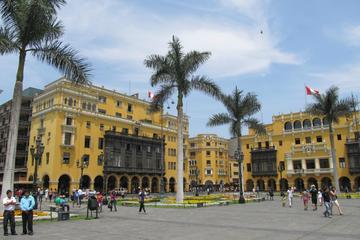 Municipal Palace
Municipal Palace When walking around Lima’s Plaza de Armas (which is also called the Plaza Mayor), you’re walking where Pizarro established the city in 1535. Though many of the buildings would ultimately succumb to earthquakes, fire, and wear, there are those like the opulent Municipal Palace that
Municipal Palace
Municipal Palace When walking around Lima’s Plaza de Armas (which is also called the Plaza Mayor), you’re walking where Pizarro established the city in 1535. Though many of the buildings would ultimately succumb to earthquakes, fire, and wear, there are those like the opulent Municipal Palace that
-
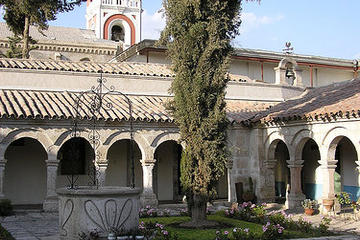 Monasterio de la Recoleta (Recoleta Convent)
Monasterio de la Recoleta (Recoleta Convent) Founded in 1648, this Franciscan Convent features four cloisters and 11 rooms. The structure represents a range of architectural styles, from Romanesque to Neo-Gothic. Moreover, a visit to Recoleta Convent is an all-in-one pass to check out the collecti
Monasterio de la Recoleta (Recoleta Convent)
Monasterio de la Recoleta (Recoleta Convent) Founded in 1648, this Franciscan Convent features four cloisters and 11 rooms. The structure represents a range of architectural styles, from Romanesque to Neo-Gothic. Moreover, a visit to Recoleta Convent is an all-in-one pass to check out the collecti
-
 La Mansion del Fundador (Founders Mansion)
La Mansion del Fundador (Founders Mansion) The history of Founder’s Mansion dates back to the early days when the Spanish first occupied Peru. Originally owned by Arequipa’s founder, Garcí Manuel de Carbajal, it was purchased by Spaniard Juan Crisóstomo de Goyeneche y Aguerreverre and used as a co
La Mansion del Fundador (Founders Mansion)
La Mansion del Fundador (Founders Mansion) The history of Founder’s Mansion dates back to the early days when the Spanish first occupied Peru. Originally owned by Arequipa’s founder, Garcí Manuel de Carbajal, it was purchased by Spaniard Juan Crisóstomo de Goyeneche y Aguerreverre and used as a co
-
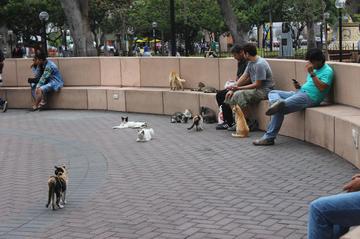 Kennedy Park (Parque Kennedy)
Kennedy Park (Parque Kennedy) Kennedy Park in Miraflores is literally the cat’s meow. Aside from being a well-kept park in Lima’s most popular district, the park is known for the dozens of cats that live in the cushy grass. If you’re a visitor who’s missing your pet back at home—or just want a cud
Kennedy Park (Parque Kennedy)
Kennedy Park (Parque Kennedy) Kennedy Park in Miraflores is literally the cat’s meow. Aside from being a well-kept park in Lima’s most popular district, the park is known for the dozens of cats that live in the cushy grass. If you’re a visitor who’s missing your pet back at home—or just want a cud
-
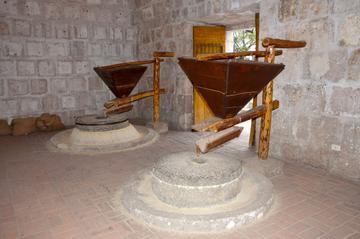 El Molino de Sabandia (Sabandia Mill)
El Molino de Sabandia (Sabandia Mill) Located four miles southeast of Arequipa is Sabandia Mill, the area’s first stone mill. Built in 1785, the structure fell into a dilapidated state until it was restored in 1973 by architect Luis Felipe Calle. In fact, Calle was so proud of his work that he pur
El Molino de Sabandia (Sabandia Mill)
El Molino de Sabandia (Sabandia Mill) Located four miles southeast of Arequipa is Sabandia Mill, the area’s first stone mill. Built in 1785, the structure fell into a dilapidated state until it was restored in 1973 by architect Luis Felipe Calle. In fact, Calle was so proud of his work that he pur
-
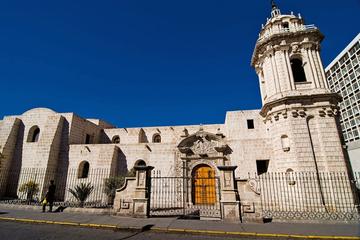 Casa de Moral (Moral House)
Casa de Moral (Moral House) Built around 1730, this large ancestral house is an excellent well-preserved example of baroque-mestizo architecture. The name of the house has nothing to do with ethics, but instead derives from the ancient mulberry (“moras”) tree in the central courtyard. Visitors wil
Casa de Moral (Moral House)
Casa de Moral (Moral House) Built around 1730, this large ancestral house is an excellent well-preserved example of baroque-mestizo architecture. The name of the house has nothing to do with ethics, but instead derives from the ancient mulberry (“moras”) tree in the central courtyard. Visitors wil
-
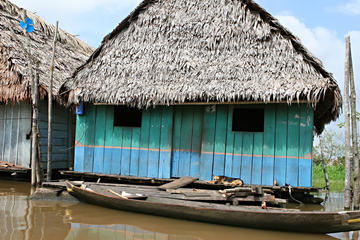 Itaya River
Itaya River The city of Iquitos is arguably an island (particularly during the rainy season), bound on three sides by massive rivers. To the northeast is the mighty Amazon, accessible by Puerto Masusa. The northwestern border of town is caressed by the curvaceous course of slow and winding Rio Nan
Itaya River
Itaya River The city of Iquitos is arguably an island (particularly during the rainy season), bound on three sides by massive rivers. To the northeast is the mighty Amazon, accessible by Puerto Masusa. The northwestern border of town is caressed by the curvaceous course of slow and winding Rio Nan
-
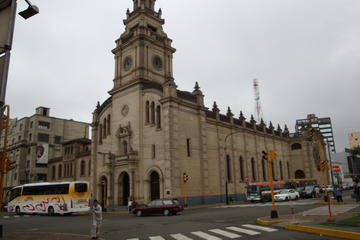 San Isidro
San Isidro One of Lima’s most affluent neighborhoods and main financial district, San Isidro is often passed over by visitors on their way to the beaches and shopping malls of Miraflores, but there are still a few surprises to be found between the business headquarters and residential blocks. In r
San Isidro
San Isidro One of Lima’s most affluent neighborhoods and main financial district, San Isidro is often passed over by visitors on their way to the beaches and shopping malls of Miraflores, but there are still a few surprises to be found between the business headquarters and residential blocks. In r
-
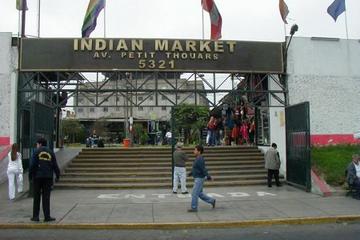 Indian Market (Mercado Indio)
Indian Market (Mercado Indio) Avenida Petit Thouars in Miraflores is lined with numerous handicraft shops, and the Indian Market (Mercado Indio) is one of the biggest and best. If you’re looking for one-stop souvenir shopping, the Indian Market is your best bet, as it’s packed with vendors selling
Indian Market (Mercado Indio)
Indian Market (Mercado Indio) Avenida Petit Thouars in Miraflores is lined with numerous handicraft shops, and the Indian Market (Mercado Indio) is one of the biggest and best. If you’re looking for one-stop souvenir shopping, the Indian Market is your best bet, as it’s packed with vendors selling
-
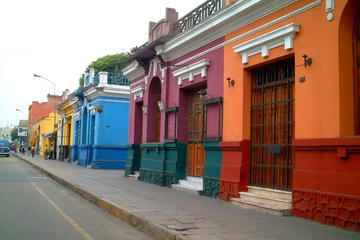 Barranco
Barranco Lima’s most bohemian district, the lively coastal neighborhood of Barranco first became popular towards the end of the 19th Century, drawing an influx of poets, writers and artists to the seaside resorts of Las Sombrillas and Barranquito. Although it was integrated into the capital territ
Barranco
Barranco Lima’s most bohemian district, the lively coastal neighborhood of Barranco first became popular towards the end of the 19th Century, drawing an influx of poets, writers and artists to the seaside resorts of Las Sombrillas and Barranquito. Although it was integrated into the capital territ
-
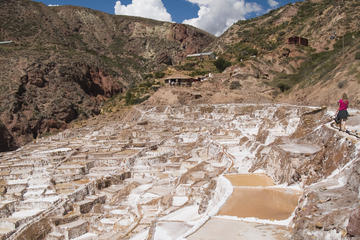 Maras Salt Pools
Maras Salt Pools Nestled in the Sacred Valley of the Incas is the remote town of Maras, known throughout Peru for its thousands of worked salt pans.Salt has been collected here since before the time of the Inca, rising to the surface from a subterranean stream and evaporating in the Andean sunshin
Maras Salt Pools
Maras Salt Pools Nestled in the Sacred Valley of the Incas is the remote town of Maras, known throughout Peru for its thousands of worked salt pans.Salt has been collected here since before the time of the Inca, rising to the surface from a subterranean stream and evaporating in the Andean sunshin
-
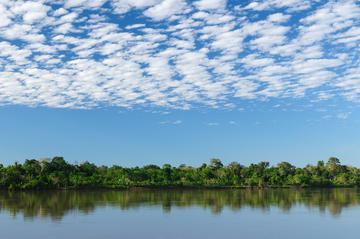 Nanay River
Nanay River The Rio Nanay undulates along the northern border of the city, a slow and interesting tributary of the Amazon that plays hosts several interesting cruises from Iquitos. The almost sensual curves of the river create beautiful white-sand beaches when the water is low, and crystal clear.
Nanay River
Nanay River The Rio Nanay undulates along the northern border of the city, a slow and interesting tributary of the Amazon that plays hosts several interesting cruises from Iquitos. The almost sensual curves of the river create beautiful white-sand beaches when the water is low, and crystal clear.
-
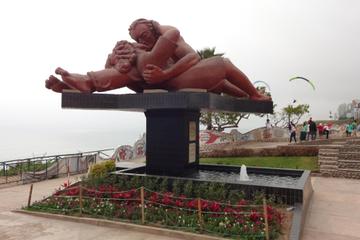 Love Park (Parque del Amor)
Love Park (Parque del Amor) Dedicated to Lima’s lovers, Love Park (Parque del Amor) understandably attracts couples who come to enjoy the Pacific Ocean views, especially around sunset. Located in the Miraflores district, the park bears a resemblance to Park Güell in Barcelona, thanks to the colorf
Love Park (Parque del Amor)
Love Park (Parque del Amor) Dedicated to Lima’s lovers, Love Park (Parque del Amor) understandably attracts couples who come to enjoy the Pacific Ocean views, especially around sunset. Located in the Miraflores district, the park bears a resemblance to Park Güell in Barcelona, thanks to the colorf
-
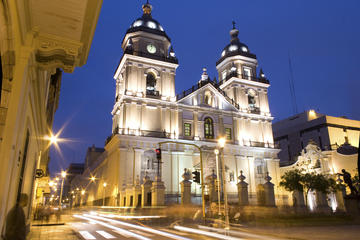 San Pedro Church (Iglesia de San Pedro)
San Pedro Church (Iglesia de San Pedro) Lima’s baroque Church of San Pedro was built in grand style by the Jesuits in 1638. The Jesuit Order’s premier church in Peru, it’s also one of the country’s finest buildings.With its three naves and dome, the church features lovely glazed tiles and Moorish-
San Pedro Church (Iglesia de San Pedro)
San Pedro Church (Iglesia de San Pedro) Lima’s baroque Church of San Pedro was built in grand style by the Jesuits in 1638. The Jesuit Order’s premier church in Peru, it’s also one of the country’s finest buildings.With its three naves and dome, the church features lovely glazed tiles and Moorish-
-
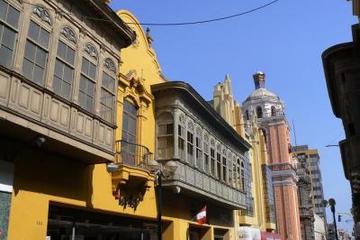 Jiron de la Union
Jiron de la Union Downtown Lima’s most lively and colorful street is pedestrianized Jiron de la Union.Lined with boutiques and stores for window-shopping, restaurants and cafes for bar-hoppers, and thronged with locals for people-watching, taking a stroll along this atmospheric thoroughfare is the
Jiron de la Union
Jiron de la Union Downtown Lima’s most lively and colorful street is pedestrianized Jiron de la Union.Lined with boutiques and stores for window-shopping, restaurants and cafes for bar-hoppers, and thronged with locals for people-watching, taking a stroll along this atmospheric thoroughfare is the
-
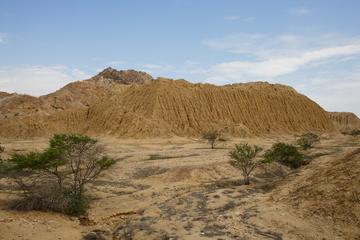 Túcume (Valley of the Pyramids)
Túcume (Valley of the Pyramids) When comparing the ancient ruins of the world, Túcume might be the most fascinating site that most people have never heard of. Located 21 miles to the north of Chiclayo, Túcume is home to 26 pyramids that were built over 1,000 years ago. One of these pyramids—Huaca
Túcume (Valley of the Pyramids)
Túcume (Valley of the Pyramids) When comparing the ancient ruins of the world, Túcume might be the most fascinating site that most people have never heard of. Located 21 miles to the north of Chiclayo, Túcume is home to 26 pyramids that were built over 1,000 years ago. One of these pyramids—Huaca
-
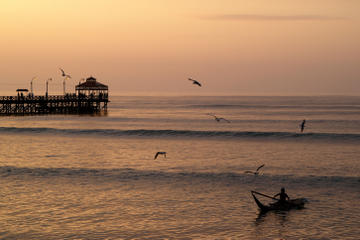 Huanchaco
Huanchaco Not many visitors to Peru are aware that it may have been the birthplace of surfing. Here in Huanchaco, however—a coastal suburb of bustling Trujillo that drifts at a much slower pace—the traditional reed boats known as caballitos de totora are considered to be the world’s first surf cra
Huanchaco
Huanchaco Not many visitors to Peru are aware that it may have been the birthplace of surfing. Here in Huanchaco, however—a coastal suburb of bustling Trujillo that drifts at a much slower pace—the traditional reed boats known as caballitos de totora are considered to be the world’s first surf cra
-
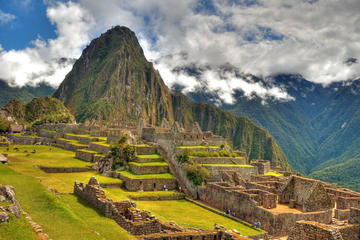 Inca Trail
Inca Trail South America’s most famous trek is the most stunning and unforgettable way to reach the lost Inca city of Machu Picchu.Along the way, the four-day trek takes in three Andean mountain passes, Inca ruins and stupendous views of the snowcapped Andes.Over the four days the treks take you f
Inca Trail
Inca Trail South America’s most famous trek is the most stunning and unforgettable way to reach the lost Inca city of Machu Picchu.Along the way, the four-day trek takes in three Andean mountain passes, Inca ruins and stupendous views of the snowcapped Andes.Over the four days the treks take you f
Total
553 -travel
FirstPage PreviousPage NextPage LastPage CurrentPage:
6/28 20-travel/Page GoTo Page:
 Presidential Palace
Presidential Palace Dominating the northern quarter of Lima’s UNESCO-listed Plaza de Armas, the grand Presidential Palace, or Casa de Pizarro, is one of the city’s most impressive historic buildings. Built in 1535 by Francisco Pizarro to mark the founding of the city, the Presidential Palace has b
Presidential Palace
Presidential Palace Dominating the northern quarter of Lima’s UNESCO-listed Plaza de Armas, the grand Presidential Palace, or Casa de Pizarro, is one of the city’s most impressive historic buildings. Built in 1535 by Francisco Pizarro to mark the founding of the city, the Presidential Palace has b
 Parque de la Reserva
Parque de la Reserva With 8 hectares of neo-classical gardens and pagodas, dotted with ornamental sculptures, Parque de la Reserva is a welcome pocket of greenery, located on the cusp of downtown Lima. Although the park was laid out in 1929 to commemorate the civilian armies of the War of the Paci
Parque de la Reserva
Parque de la Reserva With 8 hectares of neo-classical gardens and pagodas, dotted with ornamental sculptures, Parque de la Reserva is a welcome pocket of greenery, located on the cusp of downtown Lima. Although the park was laid out in 1929 to commemorate the civilian armies of the War of the Paci
 Municipal Palace
Municipal Palace When walking around Lima’s Plaza de Armas (which is also called the Plaza Mayor), you’re walking where Pizarro established the city in 1535. Though many of the buildings would ultimately succumb to earthquakes, fire, and wear, there are those like the opulent Municipal Palace that
Municipal Palace
Municipal Palace When walking around Lima’s Plaza de Armas (which is also called the Plaza Mayor), you’re walking where Pizarro established the city in 1535. Though many of the buildings would ultimately succumb to earthquakes, fire, and wear, there are those like the opulent Municipal Palace that
 Monasterio de la Recoleta (Recoleta Convent)
Monasterio de la Recoleta (Recoleta Convent) Founded in 1648, this Franciscan Convent features four cloisters and 11 rooms. The structure represents a range of architectural styles, from Romanesque to Neo-Gothic. Moreover, a visit to Recoleta Convent is an all-in-one pass to check out the collecti
Monasterio de la Recoleta (Recoleta Convent)
Monasterio de la Recoleta (Recoleta Convent) Founded in 1648, this Franciscan Convent features four cloisters and 11 rooms. The structure represents a range of architectural styles, from Romanesque to Neo-Gothic. Moreover, a visit to Recoleta Convent is an all-in-one pass to check out the collecti
 La Mansion del Fundador (Founders Mansion)
La Mansion del Fundador (Founders Mansion) The history of Founder’s Mansion dates back to the early days when the Spanish first occupied Peru. Originally owned by Arequipa’s founder, Garcí Manuel de Carbajal, it was purchased by Spaniard Juan Crisóstomo de Goyeneche y Aguerreverre and used as a co
La Mansion del Fundador (Founders Mansion)
La Mansion del Fundador (Founders Mansion) The history of Founder’s Mansion dates back to the early days when the Spanish first occupied Peru. Originally owned by Arequipa’s founder, Garcí Manuel de Carbajal, it was purchased by Spaniard Juan Crisóstomo de Goyeneche y Aguerreverre and used as a co
 Kennedy Park (Parque Kennedy)
Kennedy Park (Parque Kennedy) Kennedy Park in Miraflores is literally the cat’s meow. Aside from being a well-kept park in Lima’s most popular district, the park is known for the dozens of cats that live in the cushy grass. If you’re a visitor who’s missing your pet back at home—or just want a cud
Kennedy Park (Parque Kennedy)
Kennedy Park (Parque Kennedy) Kennedy Park in Miraflores is literally the cat’s meow. Aside from being a well-kept park in Lima’s most popular district, the park is known for the dozens of cats that live in the cushy grass. If you’re a visitor who’s missing your pet back at home—or just want a cud
 El Molino de Sabandia (Sabandia Mill)
El Molino de Sabandia (Sabandia Mill) Located four miles southeast of Arequipa is Sabandia Mill, the area’s first stone mill. Built in 1785, the structure fell into a dilapidated state until it was restored in 1973 by architect Luis Felipe Calle. In fact, Calle was so proud of his work that he pur
El Molino de Sabandia (Sabandia Mill)
El Molino de Sabandia (Sabandia Mill) Located four miles southeast of Arequipa is Sabandia Mill, the area’s first stone mill. Built in 1785, the structure fell into a dilapidated state until it was restored in 1973 by architect Luis Felipe Calle. In fact, Calle was so proud of his work that he pur
 Casa de Moral (Moral House)
Casa de Moral (Moral House) Built around 1730, this large ancestral house is an excellent well-preserved example of baroque-mestizo architecture. The name of the house has nothing to do with ethics, but instead derives from the ancient mulberry (“moras”) tree in the central courtyard. Visitors wil
Casa de Moral (Moral House)
Casa de Moral (Moral House) Built around 1730, this large ancestral house is an excellent well-preserved example of baroque-mestizo architecture. The name of the house has nothing to do with ethics, but instead derives from the ancient mulberry (“moras”) tree in the central courtyard. Visitors wil
 Itaya River
Itaya River The city of Iquitos is arguably an island (particularly during the rainy season), bound on three sides by massive rivers. To the northeast is the mighty Amazon, accessible by Puerto Masusa. The northwestern border of town is caressed by the curvaceous course of slow and winding Rio Nan
Itaya River
Itaya River The city of Iquitos is arguably an island (particularly during the rainy season), bound on three sides by massive rivers. To the northeast is the mighty Amazon, accessible by Puerto Masusa. The northwestern border of town is caressed by the curvaceous course of slow and winding Rio Nan
 San Isidro
San Isidro One of Lima’s most affluent neighborhoods and main financial district, San Isidro is often passed over by visitors on their way to the beaches and shopping malls of Miraflores, but there are still a few surprises to be found between the business headquarters and residential blocks. In r
San Isidro
San Isidro One of Lima’s most affluent neighborhoods and main financial district, San Isidro is often passed over by visitors on their way to the beaches and shopping malls of Miraflores, but there are still a few surprises to be found between the business headquarters and residential blocks. In r
 Indian Market (Mercado Indio)
Indian Market (Mercado Indio) Avenida Petit Thouars in Miraflores is lined with numerous handicraft shops, and the Indian Market (Mercado Indio) is one of the biggest and best. If you’re looking for one-stop souvenir shopping, the Indian Market is your best bet, as it’s packed with vendors selling
Indian Market (Mercado Indio)
Indian Market (Mercado Indio) Avenida Petit Thouars in Miraflores is lined with numerous handicraft shops, and the Indian Market (Mercado Indio) is one of the biggest and best. If you’re looking for one-stop souvenir shopping, the Indian Market is your best bet, as it’s packed with vendors selling
 Barranco
Barranco Lima’s most bohemian district, the lively coastal neighborhood of Barranco first became popular towards the end of the 19th Century, drawing an influx of poets, writers and artists to the seaside resorts of Las Sombrillas and Barranquito. Although it was integrated into the capital territ
Barranco
Barranco Lima’s most bohemian district, the lively coastal neighborhood of Barranco first became popular towards the end of the 19th Century, drawing an influx of poets, writers and artists to the seaside resorts of Las Sombrillas and Barranquito. Although it was integrated into the capital territ
 Maras Salt Pools
Maras Salt Pools Nestled in the Sacred Valley of the Incas is the remote town of Maras, known throughout Peru for its thousands of worked salt pans.Salt has been collected here since before the time of the Inca, rising to the surface from a subterranean stream and evaporating in the Andean sunshin
Maras Salt Pools
Maras Salt Pools Nestled in the Sacred Valley of the Incas is the remote town of Maras, known throughout Peru for its thousands of worked salt pans.Salt has been collected here since before the time of the Inca, rising to the surface from a subterranean stream and evaporating in the Andean sunshin
 Nanay River
Nanay River The Rio Nanay undulates along the northern border of the city, a slow and interesting tributary of the Amazon that plays hosts several interesting cruises from Iquitos. The almost sensual curves of the river create beautiful white-sand beaches when the water is low, and crystal clear.
Nanay River
Nanay River The Rio Nanay undulates along the northern border of the city, a slow and interesting tributary of the Amazon that plays hosts several interesting cruises from Iquitos. The almost sensual curves of the river create beautiful white-sand beaches when the water is low, and crystal clear.
 Love Park (Parque del Amor)
Love Park (Parque del Amor) Dedicated to Lima’s lovers, Love Park (Parque del Amor) understandably attracts couples who come to enjoy the Pacific Ocean views, especially around sunset. Located in the Miraflores district, the park bears a resemblance to Park Güell in Barcelona, thanks to the colorf
Love Park (Parque del Amor)
Love Park (Parque del Amor) Dedicated to Lima’s lovers, Love Park (Parque del Amor) understandably attracts couples who come to enjoy the Pacific Ocean views, especially around sunset. Located in the Miraflores district, the park bears a resemblance to Park Güell in Barcelona, thanks to the colorf
 San Pedro Church (Iglesia de San Pedro)
San Pedro Church (Iglesia de San Pedro) Lima’s baroque Church of San Pedro was built in grand style by the Jesuits in 1638. The Jesuit Order’s premier church in Peru, it’s also one of the country’s finest buildings.With its three naves and dome, the church features lovely glazed tiles and Moorish-
San Pedro Church (Iglesia de San Pedro)
San Pedro Church (Iglesia de San Pedro) Lima’s baroque Church of San Pedro was built in grand style by the Jesuits in 1638. The Jesuit Order’s premier church in Peru, it’s also one of the country’s finest buildings.With its three naves and dome, the church features lovely glazed tiles and Moorish-
 Jiron de la Union
Jiron de la Union Downtown Lima’s most lively and colorful street is pedestrianized Jiron de la Union.Lined with boutiques and stores for window-shopping, restaurants and cafes for bar-hoppers, and thronged with locals for people-watching, taking a stroll along this atmospheric thoroughfare is the
Jiron de la Union
Jiron de la Union Downtown Lima’s most lively and colorful street is pedestrianized Jiron de la Union.Lined with boutiques and stores for window-shopping, restaurants and cafes for bar-hoppers, and thronged with locals for people-watching, taking a stroll along this atmospheric thoroughfare is the
 Túcume (Valley of the Pyramids)
Túcume (Valley of the Pyramids) When comparing the ancient ruins of the world, Túcume might be the most fascinating site that most people have never heard of. Located 21 miles to the north of Chiclayo, Túcume is home to 26 pyramids that were built over 1,000 years ago. One of these pyramids—Huaca
Túcume (Valley of the Pyramids)
Túcume (Valley of the Pyramids) When comparing the ancient ruins of the world, Túcume might be the most fascinating site that most people have never heard of. Located 21 miles to the north of Chiclayo, Túcume is home to 26 pyramids that were built over 1,000 years ago. One of these pyramids—Huaca
 Huanchaco
Huanchaco Not many visitors to Peru are aware that it may have been the birthplace of surfing. Here in Huanchaco, however—a coastal suburb of bustling Trujillo that drifts at a much slower pace—the traditional reed boats known as caballitos de totora are considered to be the world’s first surf cra
Huanchaco
Huanchaco Not many visitors to Peru are aware that it may have been the birthplace of surfing. Here in Huanchaco, however—a coastal suburb of bustling Trujillo that drifts at a much slower pace—the traditional reed boats known as caballitos de totora are considered to be the world’s first surf cra
 Inca Trail
Inca Trail South America’s most famous trek is the most stunning and unforgettable way to reach the lost Inca city of Machu Picchu.Along the way, the four-day trek takes in three Andean mountain passes, Inca ruins and stupendous views of the snowcapped Andes.Over the four days the treks take you f
Inca Trail
Inca Trail South America’s most famous trek is the most stunning and unforgettable way to reach the lost Inca city of Machu Picchu.Along the way, the four-day trek takes in three Andean mountain passes, Inca ruins and stupendous views of the snowcapped Andes.Over the four days the treks take you f